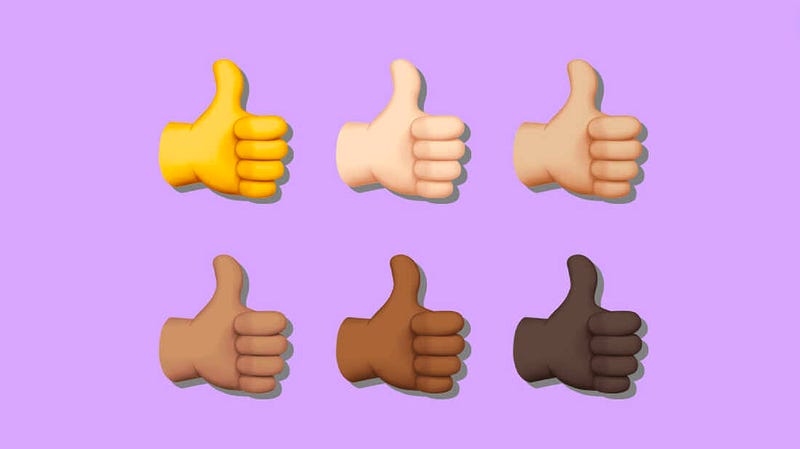The Evolution of Emojis and Their Impact on Identity
Written on
Chapter 1: The Historical Context of Emojis
In the early days, emojis were predominantly yellow. Users expressed emotions through yellow faces, raised yellow hands, and thumbs up or down, all represented in a single hue. For example, my husband frequently communicates via lengthy texts filled entirely with emojis, often choosing the bride emoji to represent me, with her white veil contrasting against her yellow complexion.
> Emojis have evolved significantly over time, reflecting broader social changes.
Chapter 2: A Shift in Representation
As society progressed, the monochromatic nature of emojis was challenged. Today, if I want to react on a Zoom call, I can select from a variety of skin tones, ranging from yellow to darker shades of brown. This shift allows individuals to express their identities more authentically.

This simple change has led to more meaningful interactions with my colleagues. For instance, my African American peers now use brown emojis, while my Hispanic and Asian American colleagues select tones that resonate with their identities. This choice empowers them to express how they wish to be perceived, challenging my previous subconscious assumptions.
Section 2.1: Understanding Colorblindness
I grew up believing that being anti-racist meant being colorblind. However, I am now learning that such an approach often overlooks the complexities of racial identity. Recognizing and acknowledging color is a crucial step toward achieving equality, but it raises challenging questions about who gets to decide how this recognition is expressed.
The Meaning of Emoji - YouTube: This video explores the cultural significance of emojis and their evolution over time, highlighting their role in communication and identity.
Section 2.2: The Role of Media in Racial Discourse
Media outlets, such as The New York Times, have begun addressing issues of power and representation more explicitly. For example, the publication has highlighted the overwhelming whiteness of those in positions of power while also adapting their style guidelines to capitalize the word "Black" when referring to people of African descent.

This change reflects a growing awareness of the historical context and shared experiences that shape racial identities. However, it also raises questions about the implications of categorizing people based solely on skin color.
Chapter 3: Rethinking Racial Categories
The terms “Black” and “White” are inadequate descriptors of human diversity. They fail to capture the complexity of skin tones across the globe. For instance, some Africans exhibit a range of hues often labeled as ebony, while Europeans may possess skin tones that could be described as ivory. What if we shifted the conversation from black and white to shades like beige and brown?
Emojis Mean What? - YouTube: This video dives into the meanings behind various emojis, emphasizing how they can reflect cultural identities and societal changes.
While it is important to acknowledge the historical significance of racial labels, we must also consider how they shape identity and status today. The dialogue surrounding race is nuanced, and understanding that it is a social construct rather than a biological fact can help us move toward a more equitable society.
Final Thoughts on Emoji Representation
After reflecting on my colleagues' diverse emoji choices, I opted to change my emoji to the lightest skin tone. Ironically, this choice caused my raised hand to blend into the background during a Zoom meeting, rendering my desire to ask a question invisible. This experience serves as a poignant reminder of the complexities surrounding race and identity, urging us to consider the implications of our choices in representation.